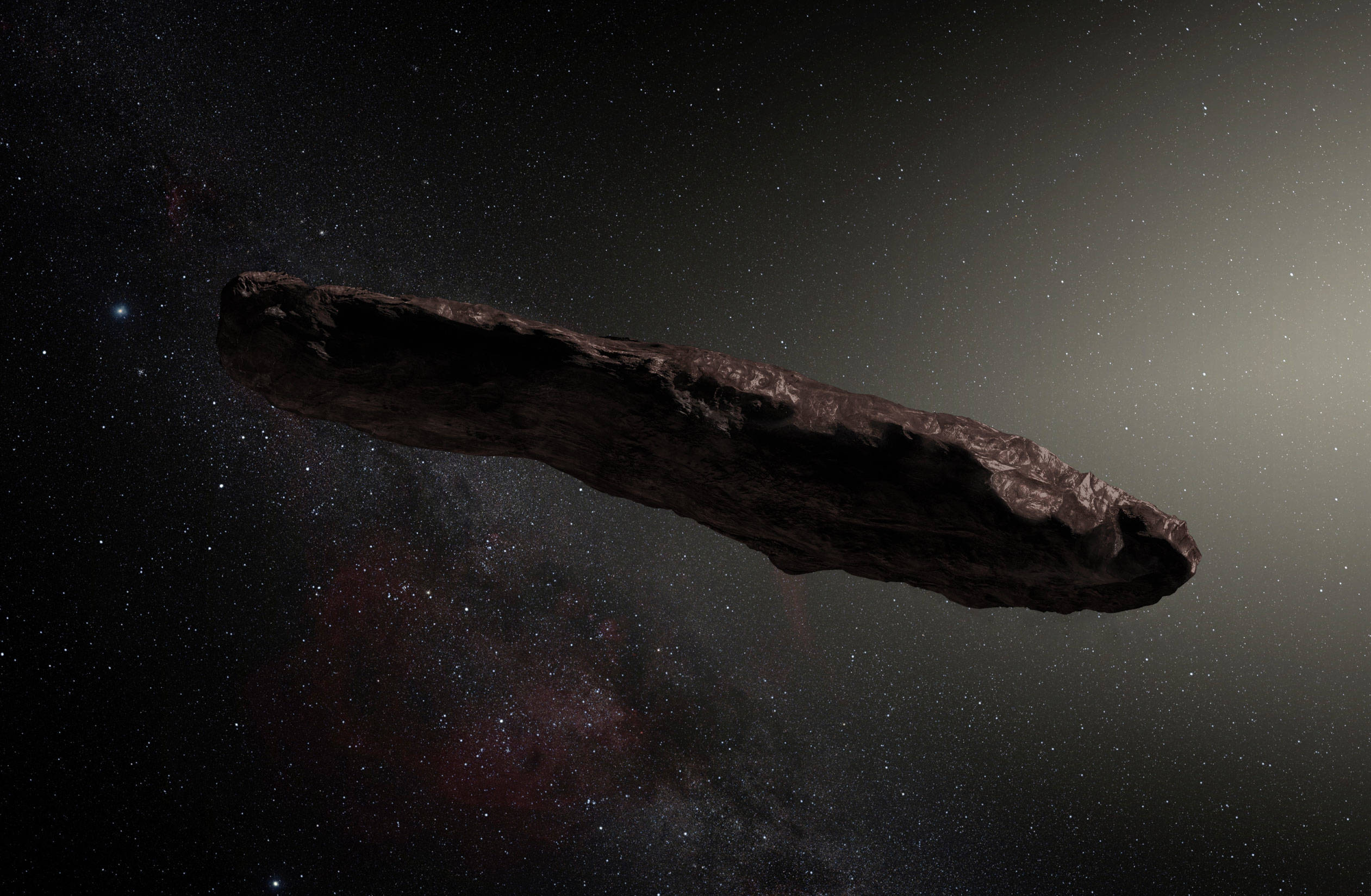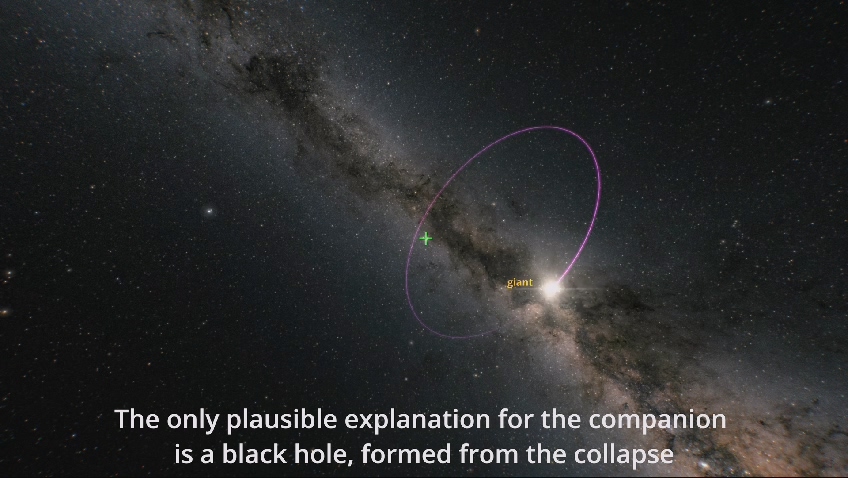Solar eclipse on April 8 dazzles sky watchers across Quebec An eclipse is a phenomenal astronomical event. The total solar eclipse on April 8 was beyond expectations,…


|
|
The cigar-shaped ‘Oumuamua, the first interstellar object in recorded human history to whizz through the Solar System, is a comet after all, a pair of astronomers declared in research published in Nature on Wednesday.
In 2017, ‘Oumuamua captured the imagination of scientists and space fans with its peculiar characteristics. It had a nobbly, rocky surface, and was elongated and flat unlike anything they had seen before. The object looked like it might be an asteroid, but behaved more like a comet.
As it travelled through the Solar System, astronomers were puzzled over how it was accelerating using non-gravitational forces. Some people even suggested the first-known foreign visitor, whose name is a Hawaiian word meaning “a messenger from afar” might be an alien spaceship. But new evidence suggests ‘Oumuamua was just an icy comet after all.
Jennifer Bergner, assistant professor of astrochemistry at the University of Berkeley, and Darryl Seligman, an postdoctoral fellow studying theoretical and computational planetary science at Cornell University, and co-authors of the Nature study, believe they have cracked the mystery by figuring out ‘Oumuamua was powered by the outgassing of hydrogen gas as it was heated by the Sun.
“A comet traveling through the interstellar medium basically is getting cooked by cosmic radiation, forming hydrogen as a result,” Bergner said in a statement. “Our thought was: If this was happening, could you actually trap it in the body, so that when it entered the solar system and it was warmed up, it would outgas that hydrogen? Could that quantitatively produce the force that you need to explain the non-gravitational acceleration?”.
They found old research papers which showed that cosmic rays bombarding ice could produce molecular hydrogen (H2) that was trapped within the ice. In Oumuamua’s case, as it absorbed solar radiation, its ice produced hydrogen to propel it along its path, but the gas remained trapped underneath its surface so it didn’t have a dust coma like typical comets do.
“Even if there was dust in the ice matrix, you’re not sublimating the ice, you’re just rearranging the ice and then letting H2 get released. So, the dust isn’t even going to come out,” Seligman said.
“For a comet several kilometers across, the outgassing would be from a really thin shell relative to the bulk of the object, so both compositionally and in terms of any acceleration, you wouldn’t necessarily expect that to be a detectable effect,” Bergner added. “But because ‘Oumuamua was so small, we think that it actually produced sufficient force to power this acceleration.”
Planetary systems like the Solar System also contain comets and asteroids. These space rocks can be expelled due to gravitational interactions with other objects, and end up travelling through our Solar System. Rogue objects like ‘Oumuamua provide rare opportunities to study planet formation in distant worlds if astronomers could study them in more detail.
“The comets and asteroids in the solar system have arguably taught us more about planet formation than what we’ve learned from the actual planets in the solar system,” Seligman said. “I think that the interstellar comets could arguably tell us more about extrasolar planets than the extrasolar planets we are trying to get measurements of today.”
A second interstellar visitor, 2I/Borisov, was spotted passing by in 2019. Astronomers immediately realized it was a comet due to its visible coma created by water vaporized from its surface as it was warmed by the Sun. ®







JERUSALEM, April 16 (Xinhua) — Astronomers have found BH3 is by far the heaviest known stellar black hole in the Milky Way galaxy, 33 times the mass of the Sun.
An international research team found the black hole when looking into the latest data group recorded in the European Space Agency’s Gaia space telescope, Israel’s Tel Aviv University (TAU) said in a statement on Tuesday.
The black hole is located 1,500 light-years away from Earth, said TAU, whose researchers participated in the study of the newly discovered binary system.
In binary systems, a visible star can be found orbiting a massive but unseen companion, indicating the latter is a black hole.
Binaries have revealed around 50 suspected or confirmed stellar-mass black holes in the Milky Way, but scientists think there may be as many as 100 million in our galaxy alone, according to NASA.
Stellar-mass black holes are formed when a star runs out of its nuclear combustion fuel and collapses.
The massive black hole BH3 was detailed in the open-access journal Astronomy & Astrophysics for further study.




“It almost hit my son” – three years ago the International Space Station threw out refuse into space, expecting it to undergo “a natural re-entry”.
But a heavy piece of debris crashed through a home in Naples, Florida, narrowly missing the householder’s son.




Team Canada’s Olympics looks designed by Lululemon
Search platform ranks Moncton real estate high | CTV News – CTV News Atlantic
Motorola's Edge 50 Phone Line Has Moto AI, 125-Watt Charging – CNET




So You Own Algonquin Stock: Is It Still a Good Investment? – The Motley Fool Canada




Space exploration: A luxury or a necessity? – Phys.org
Federal budget will include tax hike for wealthy Canadians, sources say – CBC.ca




Goldman Sachs Backs AI in Hospitals With $47.5 Million Kontakt.io Investment – BNN Bloomberg




Liz Truss backs Donald Trump to win US presidential election – BBC.com